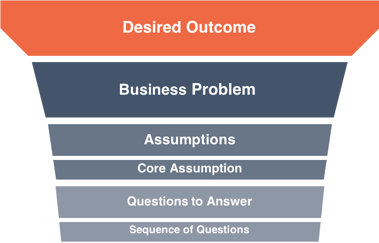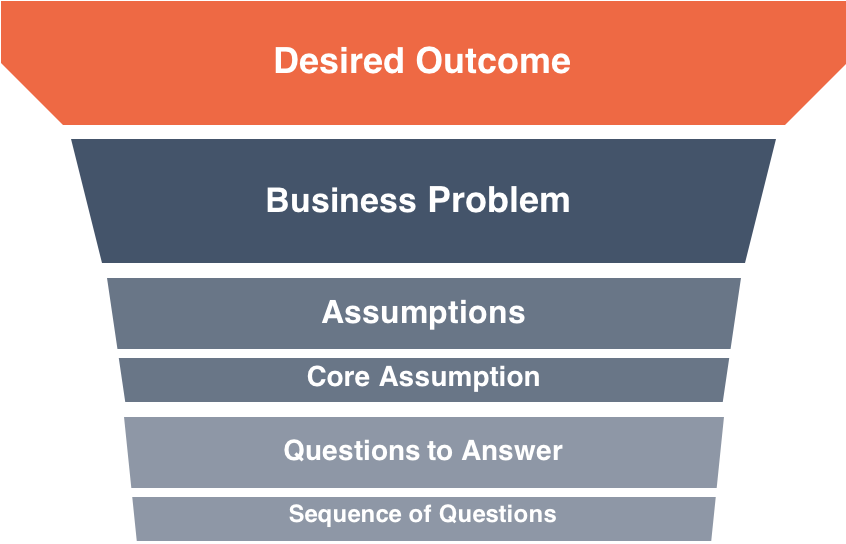How “Learn by Doing” Results in a Validated Strategy
Prosono’s Agile Strategic Planning process involves three key phases Develop Clarity, Experiment Design, and Experiment Execution. The goal of these phases is to develop a validated strategy. A validated strategy is a strategy in which an organization has tested and validated or invalidated the underlying assumptions of the strategy – bringing clarity. It also enables the organization to have strong confidence and evidence that the strategy works – accelerating execution.

Develop Clarity. The first step in our process is to bring clarity to your ultimate goal or outcome you are looking for as an organization. An outcome is the level of performance or achievement that occurred based on what is created. This is different from an output which is the activities and/or measurement of what has been created. With the outcome clear, it is time to define the business problem(s) you are looking to overcome or take on. This is often more challenging than you might think as it must be free of busines jargon and in plain English to describe what is going on and the problem at hand. With any problem there are dozens of assumptions that you assume to be true but lack demonstrable evidence to support these truths.
The next part of developing clarity is to document the assumptions and prioritize them to determine which assumptions are your Core Assumptions – meaning without validating these assumptions nothing else matters. Once you have settled on a Core Assumption you will likely have many questions that must be similarly documented and prioritized to understand those questions. If answered, those questions provide the most certainty or unlock other questions to be answered.
Experiment Design. The next step in the road to a validated strategy is to develop experiments (or tests) to uncover bits of information or learnings to help answer key questions you have defined. This part of the process is often the most challenging for clients as it is often outside of their comfort zone and requires two mindsets that are counterculture in their organization. Experiment design requires a mindset of willingness to fail and a mindset that the activities to be conducted may not answer the question. Instead, experimentation will provide learnings that can be applied to the understanding of the process. Experiments must also be developed as a minimum viable product (MVP), meaning they should take the minimum effort and cost to produce the most valuable learnings. In designing experiments with clients, we work to document the tactical steps or approach of the experiment (the how), who will be carrying out the experiment, what challenges or barriers are in our way, what is the estimated cost, what is the timeline, and what metrics will we capture. The design, as you can imagine, is analogous to that of the Scientific Method.
Experiment Execution. The final phase in the iterative journey to a validated strategy is to execute the experiments. This effort is to seek to answer those questions, often through trial and error. That question seeking and answer finding, allows you to reevaluate what you know against your outcome, and informs what the next best set of questions and actions, with each question and action requiring less difficulty than the last. The value of taking the extra time to plan and develop experiment enables an organization to iteratively develop a strategy that they have confidence will work. In contrast to the Predict and Prescribe method where teams begin to understand what has been prescribed when the strategy is launched, Organizational Agility allows your team to truly know the strategy, the why behind it, and a strong understanding of how to carry it forward.
Ultimately, through this process organizations develop a solution to meet their outcomes and one that works for their business. The ability to try and learn how various ideas may work in the market through experimentation works particularly well in uncertain times as it does not require a heavy reliance on the past and past data to make decisions about the future. We would love an opportunity to share more about our strategy approach and how it can help your organization plan and execute in uncertain times. You can sign up for more information here or reach out to our shared inbox at prosono@prosono.com.
For more information on Organizational Agility for Non-Profit organizations check out our past blog post here.
